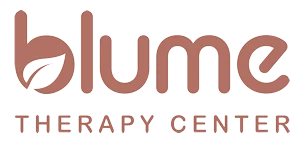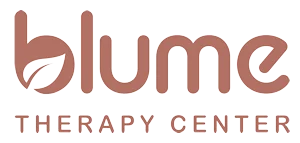This type of therapy program offers valuable strategies for navigating the challenges and complexities of adolescence. You can learn to identify unhelpful thought patterns and develop skills to manage them effectively. CBT for teens is about building a personal toolkit that helps you respond to stress, anxiety, or low mood in healthier ways, fostering resilience and confidence as you grow.
What Is CBT For Teens?
CBT for teens offers a user manual for your brain, explaining how thoughts, feelings, and actions are linked. It helps break negative cycles by teaching you to challenge unhelpful thoughts. A therapist helps individuals apply these skills to real-life situations. Ultimately, CBT equips you with strategies to manage challenging situations, calm yourself, and enhance your mood, thereby building a personal toolkit for mental well-being.
How Does CBT For Teens Work?
CBT for teens involves teaming with a therapist to explore feelings. You identify thoughts that precede negative emotions, like “nobody will talk to me” before a party. Then, you become a detective, examining evidence for and against these thoughts to find a balanced perspective. Finally, you test new behaviors. If you avoid parties, you might set a small goal, like saying hi to one person. Often, feared outcomes don’t occur, teaching your brain new lessons and strengthening your mental resilience.
What Symptoms Or Issues Does CBT For Teens Address?
CBT for teens is handy for when your brain gets stuck on a certain channel, like the “worry” channel or the “everything is terrible” channel. Many teenagers find it useful for dealing with that non-stop background noise of anxiety, especially about school, friends, or just feeling like they have to be perfect all the time.
It’s also a solid tool for when you feel down, unmotivated, or blasé about things you used to enjoy. It helps you reconnect with your life and find bits of joy again. If you get angry or frustrated over small things and then regret it later, this can help you find the pause button before you react.
CBT for teens is for any pattern of thinking or feeling that gets in your way. This includes wrestling with low self-esteem, managing stress that feels overwhelming, or even dealing with the tough thoughts that can come from a bad experience. It’s about getting your brain unstuck so you can get back to doing you.
What Does CBT For Teens Typically Involve?
CBT for teens is an active approach and typically involves a combination of talking and doing activities. Here’s a rough idea of what you might get up to.
- Spotting the thought monsters: You learn how to catch those automatic negative thoughts. It’s like noticing that your brain just whispered, “you’re going to fail this test” before you even open the book.
- Reality checking those thoughts: Once you catch them, you learn to question them gently. Look for evidence that the thought isn’t totally true, or brainstorm other ways of seeing the situation.
- Trying little experiments: This is the action part. Your therapist might suggest a small challenge, like texting a friend first or raising your hand in class once. The goal is to test out a new behavior and see what actually happens.
- Building your toolkit: You’ll collect practical skills for calming down big feelings. This could include learning simple breathing techniques, how to relax your muscles, or using mindfulness to stay in the present moment.
- Getting some homework: There might be a bit of practice outside sessions, but it’s not like schoolwork. It’s an opportunity to try out your new skills in real life and see what works for you.
What Are Common Techniques Used In CBT For Teens?
The techniques in CBT for teens focus on making ideas real and practical. They’re like different drills you can practice to train your brain. Here are some common ones you might try.
- Thought Records: This is like putting a thought on trial. You write down a sticky negative thought and then act like a detective to find evidence that supports it and evidence that doesn’t, which helps you find a more balanced perspective.
- Behavioral Activation: If you’re feeling down and doing less, this technique helps you gently get back into things. You schedule small, enjoyable activities to break the cycle of low mood and inactivity, even if you don’t initially feel like doing them.
- Problem Solving Steps: This breaks down big, overwhelming problems into smaller, manageable pieces. You learn to clearly define the problem, brainstorm possible solutions, pick one to try, and then see how it went.
- Mindfulness and Grounding: These are exercises to help you pull out of anxious thoughts about the future or past. You might focus on your breathing or use your five senses to notice things around you right in the moment.
- Role Playing: Practicing tough conversations or social situations in a safe space with your therapist. It’s a way to build confidence and figure out what you want to say before you have to do it for real.
How Can You Know If Your Thinking Is Distorted?
Our brains sometimes use shortcuts that can twist how we see things. Spotting these patterns is a key part of getting good at CBT for teens. Here are some common signs that your thinking might be distorted.
- Predicting the future: You’re convinced you know exactly how something will turn out, and it’s always bad. For example, thinking “I’m definitely going to embarrass myself at that party tomorrow.”
- Mind reading: You presume to know what others are thinking, and it’s usually negative about you. Like assuming your friend is irritated with you because they didn’t text back immediately.
- Catastrophizing: You take a small issue and blow it up into a huge disaster. Getting one bad grade leads to thoughts like “I’m going to fail this class and never get into college.”
- Black and white thinking: You see things only in extremes, with no middle ground. Something is either perfect or a total failure, or someone is either the best friend ever or the worst.
- “Should” statements: You put a lot of pressure on yourself with rules about how you or others “should” act. Thinking “I should never feel anxious” or “They should have known that would hurt my feelings” can set you up for feeling let down.
What Are CBT Interventions?
In CBT for teens, an intervention is just a specific activity or strategy you use to feel better. Think of them as different plays you can run when you’re feeling stuck. Here are a few examples.
- The Worry Timer: Instead of letting anxious thoughts spiral all day, you give yourself a dedicated 10-minute “worry time” to think about them. When the time’s up, you consciously move on to something else.
- The Thought Ladder: You take a scary goal and break it into tiny, manageable steps. If talking to someone new is intimidating, step one might be as simple as making eye contact and smiling.
- Opposite Action: You do the opposite of what your emotion is telling you to do. If sadness is telling you to cancel plans and stay in bed, you might push yourself to go for a short walk instead.
- Gratitude Tracking: You make a quick list of a few small, good things that happened each day. This isn’t about pretending bad stuff doesn’t exist, but about training your brain also to notice the neutral or positive moments.
- The Coping Card: Write down a helpful mantra or a list of your best coping skills on a notecard or phone note to pull out when you’re feeling overwhelmed and can’t think clearly.
What Are The Benefits Of CBT For Teens?
Learning skills from CBT for teens can lead to some significant wins. It’s all about getting real-world benefits that make day-to-day life easier.
- You become your own coach: Instead of needing someone else to calm you down, you learn how to do it yourself. You build a personal toolkit you can use anywhere, anytime you need it.
- Better stress management: School, social stuff, and family pressures feel more manageable. You get better at handling pressure without getting totally overwhelmed by it.
- Improved problem solving: You learn to break down big, scary problems into smaller pieces you can actually handle. This makes challenges feel less intimidating and more solvable.
- Stronger sense of control: You start to feel like you’re in the driver’s seat of your own emotions and reactions, instead of feeling like they’re controlling you.
- Healthier relationships: By understanding your own reactions and communicating more clearly, your interactions with friends and family can become a lot smoother.
CBT For Teens At Blume Therapy In Redondo Beach, California
Blume Therapy in Redondo Beach, California, specializes in CBT for teens with emotional and behavioral issues. Therapists collaborate with teens and their families on individualized plans, focusing on skill development and effective communication. The program emphasizes mentorship and academic support, utilizing its coastal location for therapeutic activities. Contact us today for help getting your thoughts and emotions back under your control.

